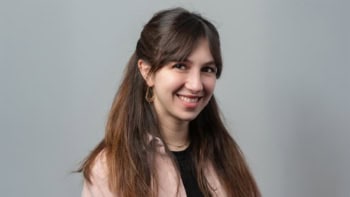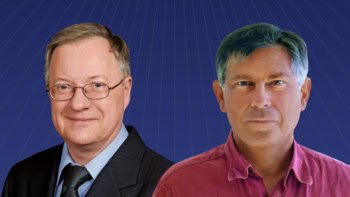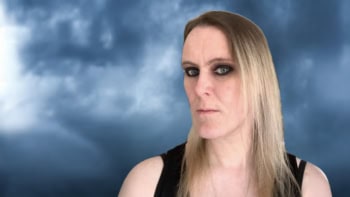With their mix of technical knowledge and problem-solving skills, physics graduates are ideally placed to tackle the world’s environmental challenges. In the third of a series of articles, Laura Hiscott speaks to three physicists who are doing their bit to build a greener, more sustainable future in the field of decarbonizing energy sources
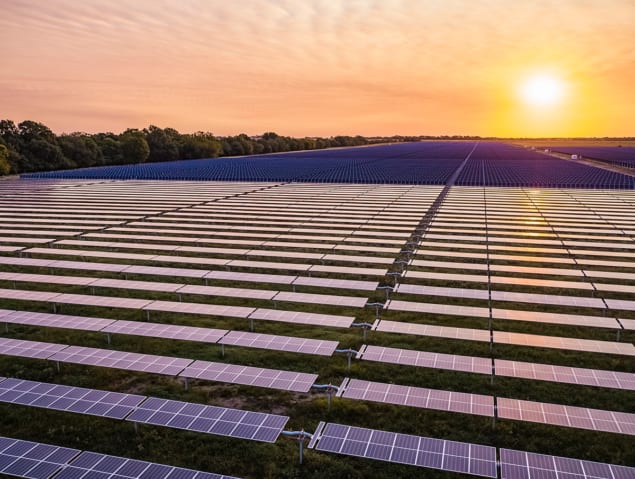
Ann Davies, chief operations officer, Lightsource BP
Taking advantage of new technologies will be essential if the world is to achieve its net-zero goals. Renewable energy sources are perhaps the most obvious of these, and the transition to them is already under way.
“I don’t think there’s ever been a more exciting time to join the energy sector,” says Ann Davies, who is chief operations officer at Lightsource BP, a firm that has been developing solar projects since 2010, and now employs nearly 600 people. She took up her current job after studying physics at the University of Oxford, UK, and gaining experience in several engineering roles after graduating.
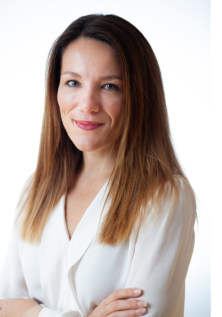
Among the main reasons to choose a career in renewables, Davies cites the growth that the sector is experiencing due to the increased focus on climate change and demand for clean energy. “Along with the cost of solar and wind dropping significantly, that makes renewables a really sound economic proposition, which means that investment is at a record high,” she explains. “From a graduate perspective, that means there will be more and more opportunities as your career develops.”
Davies’ work involves leading teams of scientists and engineers working on the planning, implementation and operation of solar projects around the world. She notes that there are lots of problems for scientists to solve, from loading up the grid with renewables to managing intermittency issues.
When recruiting new scientists and engineers, Davies emphasizes the importance of technical grounding. “Physics teaches you how to break down complex problems into simple parts, and we need those skillsets,” she says. In the hiring process, she also values interpersonal skills. “It’s not one person who is going to solve this – it takes a team.”
Davies advises graduates who want to join these efforts to read widely and to connect with people in the industry. Since there are so many different areas of sustainability that physicists can contribute to, she believes it is important to find out what makes you tick as an individual, and how you want to apply your skills. For herself, she finds working in the energy sector rewarding, because it is so universal. “Energy touches everyone,” she says, “so being part of providing it in a responsible way really gets me going when I get up in the morning.”
Hari Chohan, nuclear radiation analyst, UK Atomic Energy Authority
While solar and wind energy might be the first clean-energy technologies that spring to mind, they are not the only low-carbon options. Another relevant area in which many physicists work is nuclear energy, both fission and fusion.
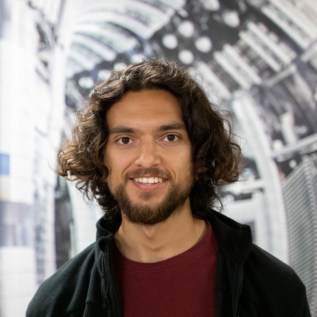
“I consider all nuclear energy to be green energy,” says Hari Chohan, who is a nuclear fusion radiation analyst at the UK Atomic Energy Authority (UKAEA). “My granddad was an engineer and worked on nuclear projects,” he adds, “so I’ve always been pro-nuclear energy.” Chohan developed a stronger interest in nuclear fusion while writing an article about it for one module of his physics degree at Imperial College London.
As a result of these two influences, Chohan decided to do a Master’s degree in physics and nuclear technology at the University of Birmingham, UK. He then did a nine-month internship at Fusion for Energy in Barcelona, a body that co-ordinates the EU’s contribution to ITER, which is the largest experimental fusion reactor under construction in the world.
During this internship, Chohan’s main area of work was neutronics, also known as neutron transport, which is the study of the motion of neutrons and how they interact with materials. This is not only important for developing appropriate shielding but also estimating the lifetimes of components. “Neutrons are produced in both fission and fusion,” he explains, “but they have a lot more energy in the case of fusion, so we need to ensure the materials and components we design can withstand them.”
Chohan continues to work on fusion neutronics in his current role at UKAEA, which involves programming, running simulations, analysing results and writing them up in reports. “As well as working on major international projects, we have a couple of fusion test machines at UKAEA, the Mega Amp Spherical Tokamak Upgrade (MAST-U) and EUROfusion’s Joint European Torus, and we’re designing a prototype fusion energy plant, the Spherical Tokamak for Energy Production, at the moment, so there’s a lot of active research going on,” he says.
Chohan believes accurate public communication about nuclear energy is essential. “In fusion, unlike fission, there will be no high-level nuclear waste generated by the reaction itself, but there will still be a lower level of nuclear waste generated by the interaction of the neutrons with the reactor components,” he says. “All technologies have advantages and disadvantages. To move away from fossil fuels, we will need a mixture of different energy sources, but we can’t do it without nuclear. And the prospect of nuclear fusion is truly exciting.”
Rhiann Canavan, scientific project manager, Crossfield Fusion
While fusion is a long-term goal with huge clean-energy potential once it’s achieved, we don’t have to wait until then to get something positive from the research going into it. There are many by-products along the way that can be useful more immediately, as Rhiann Canavan, who works at UK-based start-up Crossfield Fusion, has discovered.

While studying at the University of Birmingham, UK, Canavan was inspired by a nuclear-physics professor to go into nuclear power. “I knew I wanted to go into a job where I was delivering something useful,” she says, “and nuclear power seemed like it had the potential to change the world.”
After graduating with an MSci in physics, Canavan studied for a PhD in experimental nuclear physics with the University of Surrey, UK, and the National Physical Laboratory. Her project focused on understanding fast neutron-induced fission reactions, which can be done to make nuclear waste decay faster.
After finishing her PhD, Canavan did a summer placement with Crossfield Fusion, which she found through the South East Physics network (SEPnet) – an association of nine university physics departments that supports students in south-east England. “When I read the mission of the company, I really wanted to get involved,” she says. “The end goal is fusion, but there are also short- and mid-term goals, such as using the technology to produce radioisotopes for medical scans.”

Green jobs for physics graduates: finance and economics
After completing her internship, Canavan joined the company in a permanent role as scientific project manager. Crossfield Fusion is a start-up with just five employees, so her tasks vary widely. She began by helping to build the research reactor, and she now plans and carries out experiments with it. “Some days are lab days when everything has to be spot-cleaned because we’re installing components,” she says. “Other days I’m analysing data, computer programming or group brainstorming what to try next.”
Canavan says she feels a lot of ownership of the work, having seen the progress from the very early days. “Your heart is really in it and you want it to succeed,” she says. Since deuterium – a key ingredient in fusion reactions – is highly abundant and can be extracted from any type of water, Canavan also points out how much more environmentally friendly it would be to fuel a fusion reactor than to burn fossil fuels. “Instead of digging up coal,” she says, “we could just use sea water.”

